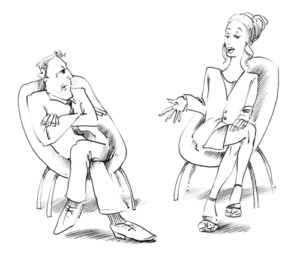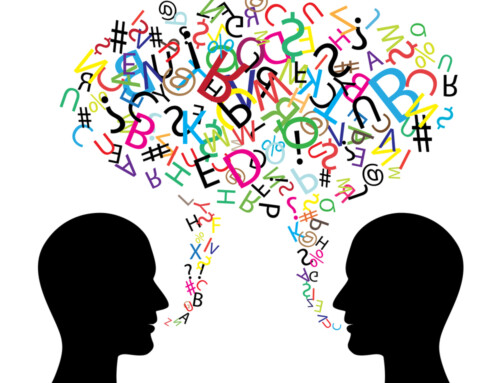 Fundamentally, body language is seen as an involuntary and unconscious phenomenon that adds to the process of communication. (Wikipedia)
Fundamentally, body language is seen as an involuntary and unconscious phenomenon that adds to the process of communication. (Wikipedia)
{5 minutes to read} Setting: my office has a sofa that sits three people comfortably, a clear almost invisible coffee table, my armchair across from the sofa and a couple of extra chairs on either side of the room. A candy bowl, water pitcher with glasses, tissues, paper and pens sit on the table.
During mediation sessions in which people are working through their divorce, or coming together to resolve other types of crises, all parties need to participate in the conversation and find ways to make joint decisions.
In addition to what is actually expressed through words during these meetings, one can also observe many non vocal movements, facial expressions, gestures, breathing patterns, all known as body language. Body language can be positive, or negative. Sometimes it may even be somewhat contradictory to what is actually said in words, and therefore must not be ignored to get a full understanding of people’s needs.
Here are a few examples of what body language may look like:
Scenario #1:
One person arrives first, sits on one side of the sofa and is looking at his iPhone. The other person comes in, sits on the other side of the sofa, or sits in a separate chair to the side of the sofa. They don’t look at each other and barely mumble “hello.” Their bodies are actually facing the opposite direction from each other. One or both may be looking towards me, but it is clear that they don’t want their eyes to meet. One may have his/her arms crossed, or show signs of impatience, displaying from the start some anger for being brought into this situation.
Without a word having been spoken, we already know this may be a contentious discussion.
Scenario #2:
The first person to arrive sits closer to the middle of the sofa. When the second person comes in, he/she sits close to the first person. They greet each other in a friendly manner, maybe even a smile. They may hug, (yes, it happens even in divorce), arrive with a snack for the other person, or when helping themselves to water, fill a glass for the other person.
Their body language, how they hold their bodies and their heads, the expression on their faces, all indicate that they are open to the conversation and ready to work together to a satisfactory agreement.
Scenario #3:
In this scenario, both parties appear to be friendly and wanting to remain friends. They greet each other, sit near each other on the sofa, seem animated and demonstrate positive attitudes, but at some point in the session, something comes up which triggers an underlying emotion. The body language changes abruptly signaling that something is festering below. They start withdrawing slightly from each other, sitting a little further away. Their faces start displaying tension, maybe even anger. At first their language may not be in synch with their verbal cues, but soon new words will follow to express their discontent.
The body language was definitely a precursor to what was going to be said.
People are constantly throwing off many different signals, loud ones and silent ones, through words but also through body language. It is important for the parties in the room, as well as for the professional helping those parties resolve their conflicts, to be attuned to all signals emitted, especially those that may not be heard but rather observed.
In Part II, we will discuss how body language can give us clues and how we can incorporate them into the mediation process.
Jennifer Safian
divorce and family mediation
upper east side of manhattan (nyc)
new york, ny
(917) 881 5206
jpsafian@gmail.com
Latest posts by Jennifer Safian (see all)
- misinterpreting your partner’s demeanor may lead to conflict - October 9, 2024
- demystifying the money talk - September 11, 2024
- why are we afraid to discuss money? - August 21, 2024





Leave A Comment